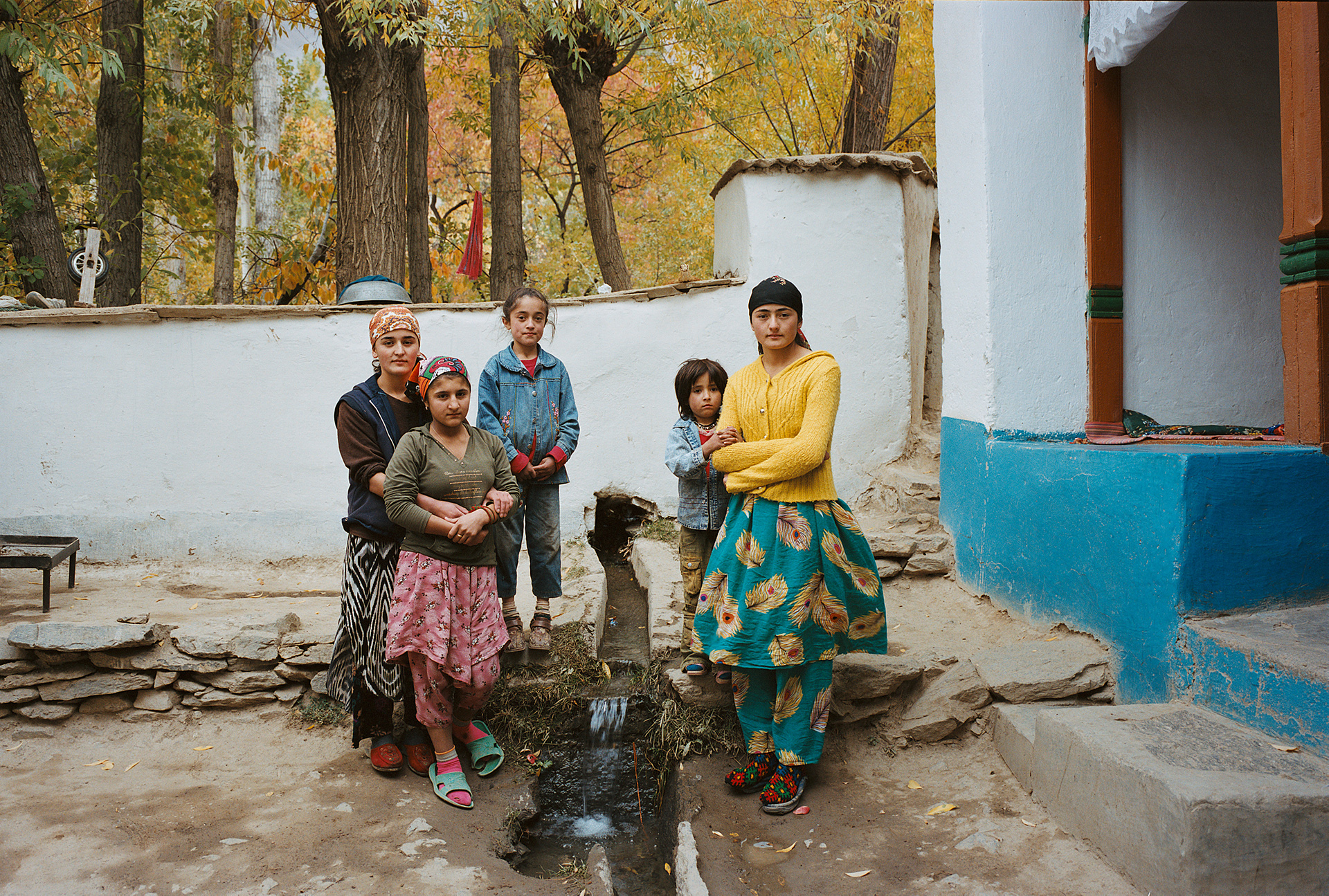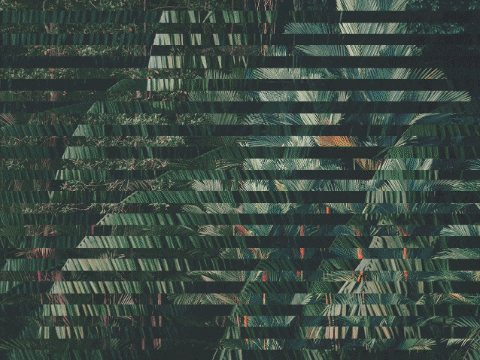The best way to understand the Pamirs is to understand and study their houses, the origin of their beliefs and the symbol of the syncretism that runs through their faith from Zoroastrianism (the world’s first monotheistic faith) to the present day, covering more than 2,500 years of history and dating back to the origin of all the main religions.
The Pamiri house or Chid, as it is called in the region, also encompasses the entire cosmogony of the people’s traditions and hosts their basic activities. Understanding it is the clue to understanding their cosmology. From macrocosm to microcosm, the Pamiri house is a mechanism that supports life and an embodiment of their beliefs. Each part and each section is defined by a function and reason. It can exist in a million different shapes, but essentially the coordinates of the basic structure and concept are driven by a unity and a cosmology that are precise and exemplify a love of the elements and nature as well as a respect for knowledge and spirituality. In a way, it is a house and also a place of worship; a temple and a domestic shelter. Each function or use is delimited to its needs and a vision and understanding of the world; it is a spaceship and a vessel. The orientation is defined by the sun and the house becomes a sundial or clock according to the activities of the day. The movement of the light also mirrors the cycle of life from birth and youth to old age and death. Each part of the house is used for a purpose and that use is set in rules that are never forgotten or broken, as if the space had invisible walls or limits defined by tradition and time – from the way each member of the community sits to their order and position.
Photographs captured in Hichigh and Bartang, Badakhshan autonomous region in Tajikistan.
All photographs and drawings are courtesy of Carlos Casas.




Cosmological diagram. Conceptual compass of spatial dimensions in Badakhshan and Pamir spiritual beliefs.
The house is divided into three living areas (Sang) that symbolise the three kingdoms of nature and the different aspects of creation: animal, mineral and vegetable. The inner spaces are separated by level. The first level, or earthen floor (Chalak), symbolises the inanimate world. The second level, a raised platform (Loshnukh) around 50cm in height, represents the vegetative soul. And the third level (Barnekh), sometimes higher (around 70cm), represents “the cognitive soul” and is normally used for sleeping and eating, representing air and water respectively.
The structure is built on 5 pillars that initially symbolised the elements: earth, water, fire, air and ether. In Zoroastrianism, the pillars’ symbolism may have corresponded to the major gods/goddesses (Yazata or Eyzads): Surush, Mehr, Anahita, Zamyod and Ozar. Later, these were changed to syncretise Islamic beliefs, coming to symbolise the five members of Ali’s family: Mohamed, his son in law Ali, Mohamed’s daughter Fatima and their sons Hassan and Hussein. The number five also reflects the five principles of Islam: faith, prayer, charity, fasting and hajj).

Hichigh is one of the highest inhabited villages in the Pamirs. Lying on the slope of a mountain that divides Tajikistan from Afghanistan, and with a view of the highest mountains in the range, it is composed of 8 houses and 7 families who live ensconced in solitude, 3,735 meters up the rocky mountains and nearly a 3-hour walk from the closest road, keeping this village in total isolation. The nearly 30 inhabitants are mainly old people and children. All of the working men are in Russia, leaving the household burdens to the women and children, following a style of life that has not changed in thousands of years. In Hichigh, there is a mill, for flour, that uses water from a small and intricate irrigation system that also supplies the houses. In Hichigh, there is a blacksmith’s forge, but few young men know how to use it.
The main defining symbol of the house is the skylight, consisting of chorkhona (four houses), which connects the house to the exterior and the only source of light. It consists of four concentric squares that ascend to the rauzam or opening, each representing a different element: earth, water, air and fire.
The main beams of the structure are held up by the pillars. The first beam symbolises universal reason (Akli kul) and the second the universal soul (Nafsi kul). In Zoroastrianism, the two beams corresponded to the material and spiritual worlds and they sustained the transversal beams that are always a defined number in relation to the size of the house. There are several different theories concerning their number. For some, the total must be the number of Ismaili Imams (49), while for others, they must be equal to the number of Ali's Army when they were killed in Dashti Karbalo (72). In most cases, there are thirteen intermediary beams: six - over the fireplace - representing Adam, Noah, Abraham, Moses, Jesus and Mohamed, the six prophets revered in Islam (in Zoroastrianism the number six could relate to East, West, North, South, Upper and Lower); and seven representing the first seven Imams. In Zoroastrianism, the number seven relates to the main heavenly bodies (Sun, Moon, Saturn, Jupiter, Mars, Venus and Mercury) and the seven principal Amesha Spentas, the “Holy Immortals”, or so-called angels. The Ismailis are “sevener” Muslims, for whom Ismail was the seventh Imam.
The Pamiri house is normally built of stones and mud or plaster, with a flat roof on which hay, apricots, mulberries or dung for fuel can be dried.


In Hichigh, there are 12 goats that produce enough milk for the whole village and a few scattered dogs. In Hichigh, almost nothing grows in the rocky ground apart from potatoes, some fruit and the tastiest apples in the region. Every once in a while they sacrifice a sheep, but the basic food is sirchoi, a hot tea served with dry bread dipped in goat’s milk and butter. A few years ago, electricity arrived, but it is of little use since the houses are naturally lit by a central opening in the roof. In Hichigh, nearly everybody is related, having intermarried through the generations. The religion comes from the time of Zoroaster and some say they are all descended from Alexander the Great, or Zikander as they call him. In Hichigh, the only entertainment is the majestic view of the mountains, the ill company of wolfs, falling stones and the winds that blow through the valleys towards the Himalayas.

In addition to the carved Zoroastrian symbols, the houses have several other decorative details. These appear mostly on the main beam that crosses the two main pillars and that creates the main entrance. Sometimes a sun symbol and other Zoroastrian geometrical figures can be seen, and a Marco Polo sheep horn may decorate and stand in the entrance or on the main pillar. A photograph or portrait of the current imam is also a recurrent feature in the houses and is always positioned on the pillar that corresponds to Ali, as a way of showing continuity and the line of descent.
Other elements of decoration are drawings on the walls done during the New Year celebration (Nowruz) by hand. Some willow twigs and crowns are also hung to symbolise fertility and purity. White and red are the predominant colours in the traditional clothes – the symbols of blood, sun and fire, as the source of life, and milk, as the source of human well-being.
Entering a Pamiri house is like entering a sacred space or repository of life. It offers an array of invisible spatial traditions and domestic and cosmic architecture, filled with flows of connecting cosmogonies that have been part of human life since the beginning of spiritual thinking. For several reasons, the Pamiri house might be the oldest and purest spiritual home that still exists.
Some of the information included in this text was collected from this website about the Pamirs.
https://www.pamirs.org/
Carlos Casas is a filmmaker and artist whose practice encompasses film, sound and the visual arts. His films have been awarded in festivals around the world, like the Venice Film Festival, Buenos Aires International Film Festival, Mexico International Film Festival, CPH DOX Copenhagen, FID Marseille and the International Film Festival Rotterdam, and presented in several festivals and cinematheques. His work has been exhibited and performed in international art institutions and galleries, such as Tate Modern, Fondation Cartier, Palais de Tokyo, Centre Pompidou, NTU CCA Singapore, Hangar Bicocca, GAM Torino, Bozar, among others, and also at the Triennale di Milano.
Atypical Traditions, curated by Gonçalo F. Cardoso, is a music programme that aims to reconfigure our idea of history and traditional thinking to shape a brave new vision of the past, present and future. Taking a no-holds-barred attitude to the past and proposing a complete reinterpretation of the future, artists from different backgrounds and geographies (Portugal, Spain, US, UK) present new musical perceptions that try to find new meanings in an everchanging ultra-globalised society. In the context of the first of four themes — entitled “Visions at the End of the World” —, Carlos Casas performed the 19th incarnation of “Avalanche”, a work in progress (started in 2009) about Hichigh, one of the world's highest inhabited villages in the world, in the Pamir mountains, Tajikistan). This site-specific film is adapted and reedited in relation to the context each time it is presented.









